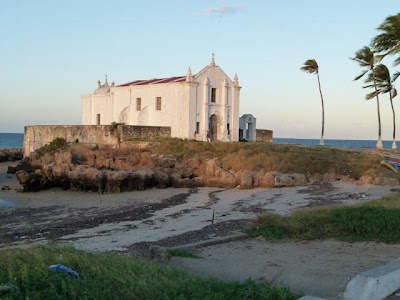1st June, Pomene Beach.
Built at the end of a 22km isthmus, this camp site has the Indian Ocean to sea, a river estuary to the west. We drove through deep sand in places to get here, skirting the mangroves for much of the distance. The 60km drive from the highway was very interesting with us passing through a variety of cultivated land, swamps, high dunes and of course the sand. We don’t normally pick up people wanting lifts as room in the front is restricted but traffic on this road is infrequent and Vikitor looked hot and desperate. A nice man, almost 50, he was one of the few people we have seen with graying hair. He worked at the other lodge on the peninsula and public transport out to it is non existent.
The ruins of a hotel stand on a point of land nearby. It was abandoned in 1975 when the Portuguese were thrown out. Known as the 48/5 law, they were given 48 hours and could take only 5 bits of luggage per person. Sounds tough but they weren’t the most generous of colonials and treated the Africans no better than serfs. Following their departure the country was embroiled in a 17 year war in which the South African army and the CIA threw everything they could at the fledgling government to try and overturn the socialist government. Along the way the Mozambique president, Samora Machel, was assassinated, his plane being shot down near the South African border. His party, Frelimo. survived and, I think, has been in power ever since.
The country has still along way to not rely on foreign aid but is slowly getting there. I believe aid has reduced from 70% to fewer than 50% of the economy. It is still very much a third world country but tourism is starting to bring money into the country’s coffers.
2nd June.
We have decided to stay a third night here. It’s very nice, not crowded and with the use of a baraca gives us just a bit more comfort. A baraca is a 3mx3m thatched shelter with one side covered in. It has a cement floor, light and power point. Usually people would erect their tent in it but we have parked the bakkie next door and using it as a lounge. I have spent the day spray painting all and sundry. Our Engel fridge has always annoyed me the way it showed its wear and tear from being a rental vehicle so a while back I bought some silver spray paint and sanding paper. Today was the first opportunity I had to spruce it up. It looks great. Had some over so did the jerry cans on the back and maybe the wheel rims tomorrow.
Just harking back to my birthday on the 31st: we decided to eat out at Morrungul and ordered a seafood platter for two. Whereas the previous one was delicious, this one was a shocker. None of the sea food was fresh, all frozen, and I had a crook gut afterward. Disappointing as I had just bought fish that afternoon and had been offered prawns and crays by locals.
Last night I cooked the fish. I love cooking fish with the scales still on as the juices are retained. But this one was so fat I was unsure it would cook all the way through on the coals. I turned it over every minute of so, after 30 minutes we took it off. It was cooked perfectly. One side more than did the 2 of us, we are having the other side in a Mediterranean stew tonight. It’s a hard life.
































